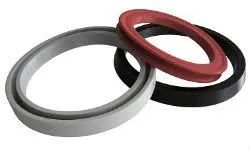10 月 . 04, 2024 17:44 Back to list
rotavator oil seal
Understanding the Importance of Rotavator Oil Seals
Rotavators are essential agricultural tools used for tilling and preparing soil for planting. They work efficiently to break up compacted soil, mixing in organic matter, and creating a well-aerated seedbed. However, like any mechanical equipment, they are subject to wear and tear. One of the critical components that can affect the performance and longevity of a rotavator is the oil seal. This article explores the significance of rotavator oil seals, their functionality, and maintenance tips.
What are Oil Seals?
Oil seals, also known as dirt seals or grease seals, are crucial components in mechanical systems. They prevent the leakage of lubricants and protect the interior parts from contaminants such as dirt, dust, and water. In a rotavator, oil seals play a vital role in maintaining the lubrication of the gearbox and axle components, ensuring smooth operation.
Functionality of Rotavator Oil Seals
The primary function of rotavator oil seals is to keep the lubricant in and external elements out. When the rotavator is in use, it operates at various speeds and is frequently exposed to soil, moisture, and other environmental factors. The oil seal maintains a barrier against these elements, preventing contamination and ensuring that the lubricant within the machinery remains effective.
By preventing lubricant leakage, oil seals help maintain optimal operating conditions within the gearbox and other moving parts. This is crucial, as proper lubrication minimizes friction, reduces wear, and enhances the overall efficiency of the machine. When oil seals fail, oil leaks can occur, leading to insufficient lubrication, which might cause severe damage to the rotavator’s components.
Signs of Oil Seal Failure
Recognizing the early signs of oil seal failure can save you from costly repairs and downtime. Common indicators include
1. Visible Leaks Oil pooling around the machinery or drips on the ground can signal a failing oil seal. 2. Strange Noises Unusual noises, like grinding or whining, may indicate insufficient lubrication due to oil leaks.
rotavator oil seal

4. Poor Performance A noticeable decrease in the efficiency of the rotavator might point towards internal damage caused by oil seal failure.
Maintenance Tips
To prolong the lifespan of oil seals and the overall rotavator, consider the following maintenance tips
1. Regular Inspections Conduct routine checks for leaks and monitor the condition of the oil seal. Early detection can prevent further damage.
2. Lubricant Quality Ensure that the lubricants used meet the manufacturer’s specifications. High-quality oil can minimize wear and support the longevity of seals.
3. Environment Awareness When using the rotavator in challenging conditions, such as wet or muddy soils, increase inspection frequency to avoid contamination.
4. Professional Assistance When in doubt, consult with a professional technician for thorough inspections and timely replacements of oil seals.
Conclusion
Oil seals are integral to the efficient functioning of rotavators. By understanding their importance and the potential signs of failure, operators can ensure that their equipment remains in optimal condition. Regular maintenance and prompt attention to any warning signs will help enhance the durability and performance of rotavators, facilitating seamless agricultural operations. Investing in quality oil seals and adhering to maintenance practices will result in long-term benefits, maximizing productivity in the field.